Bucha, Irpin and Hostomel
Kyiv region, Ukraine
Rapid Assessment of Recovery Needs: Synthesis
Click here to go to Bucha town report.
Click here to go to Irpin town report.
Click here to go to Hostomel village report.
CONTEXT AND RELEVANCE OF RECOVERY RAPID NEEDS ASSESSMENT
In the early morning of February 24, 2022, the Russian Federation launched an unprovoked and unjustified war against Ukraine, beginning with missile strikes on military and civilian infrastructure. The land-based invasion hit most Ukrainian regions bordering territories of the Russian Federation, Republic of Belarus, temporarily occupied Crimean Peninsula, Donetsk and Luhansk regions. As of early June, the fourth month of full-scale invasion, nearly 16 million people have been displaced in Ukraine, out of the total population of 43 million before the war. More than 5 million Ukrainian refugees have been recorded in Europe, of which almost 3.5 million have registered for various official protection programmes in those countries. More than 10,000 civilian casualties were confirmed in the country as of June 19, including 4,509 deaths, of which 294 are children. Precise number of casualties is unknown given limited access to data from temporarily occupied and frontline territories.
The Kyiv region, bordering Belarus on the North, was severely affected by the initial invasion. The Kyiv region holds strategically important national governance structures and military infrastructure. Outside of Kyiv city, the region comprised an area of 28,121 kilometers and was home to 1.8 million citizens as of February 1, 2022. Several areas of the Kyiv region were temporarily occupied by Russian troops for approximately one month.

During that period, occupiers killed 1,288 civilians in Kyiv region according to the Chief of National Police of Ukraine (as of May 18, with investigations ongoing), with thousands still reported missing.
Kyiv region as a densely populated, geopolitically and infrastructurally important area, was selected for this Rapid Needs Assessment (RNA). Specifically, its north-west Bucha rayon (district), which was heavily damaged by the temporary occupation.
Bucha rayon comprises 12 amalgamated communities, with its centre in Bucha town. The RNA effort covered the 3 largest settlements of Bucha rayon: Bucha town, Irpin town and Hostomel urban-type village, and corresponding communities. (See Map from BBC).
During the temporary occupation period, Bucha town was a base of the Russian units deployment, where no long-lasting combat activities took place (unlike situations of Hostomel and Irpin). Casualties were primarily among civilians, with severe damage to public and critical infrastructure. 30% of Irpin town was taken by Russian forces from Bucha direction (north-west), but still, local security units and the Armed Forces of Ukraine continued to control 70% of the territory of the town.
Hostomel was one of main targets of Russian forces in the Kyiv region due to its important military and strategic infrastructure - such as Hostomel Airport. Hostomel was severely shelled and damaged. While humanitarian assistance continues to be important in the region, the RNA focused primarily on local communities` current post-occupation recovery needs, issues relevant to state of affairs as of two months after liberation of the settlement area, and identification of organisations and supporters active in the field. Separate RNAs, conducted for each of the three communities, can be found at Bucha, Irpin, Hostomel.
Bucha town was home for approximately 50,000 inhabitants (with almost 67,000 in the Bucha amalgamated community, hereafter - Bucha community) prior to the invasion. Bucha town was held under temporary occupation of Russian forces for 33 days, being captured on February 27, and liberated on March 31, 2022. Up to 3,500 civilians remained in town under Chart #1 and #2 suggest comprehensive comparison of pre and post-invasion state of affairs.
Total 10,317 Houses
Total 391 Buildings


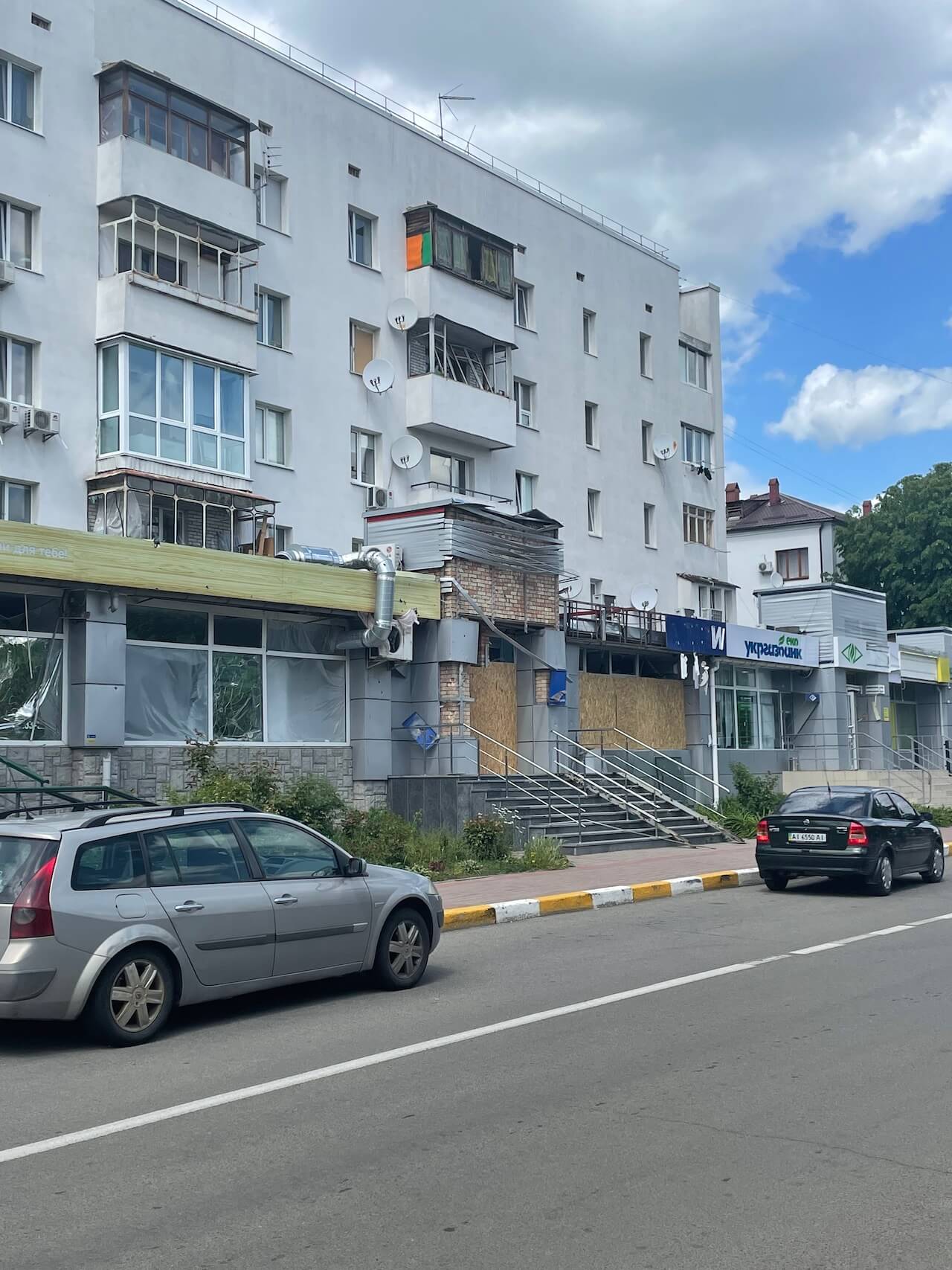
Irpin was partially captured by Russian forces and temporarily occupied - full 25 days, being captured on March 4th and liberated on March 28th. Invading troops were stopped there and blocked from further movement towards Kiev. For this, the local community paid a high price: more than 300 civilians and 37 soldiers of local territorial defence were killed, and hundreds injured. Prior to invasion, approximately 100,000 inhabitants lived in Irpin town. Up to 5,000 civilians remained in Irpin during the occupation, while 95% of the local population evacuated during the first days of invasion. As of early June, 2022, local authorities report that approximately 30,000 local residents had come back to Irpin town. All schools and kindergartens have been affected by missile strikes or shelling. As of June 8, reported number of damaged buildings in Irpin town is 2,084, of which 749 are completely destroyed. 1,412 single-family houses are damaged, of which 696 completely destroyed; 577 apartment buildings are damaged, of which 40 completely destroyed; 43 social infrastructure facilities damaged, of which 12 completely destroyed. Critical utility infrastructure in Irpin town was destroyed completely. Chart #3 suggests comprehensive comparison of damaged and destroyed buildings as separate categories.
Chart #3: Irpin town damaged and destroyed buildings

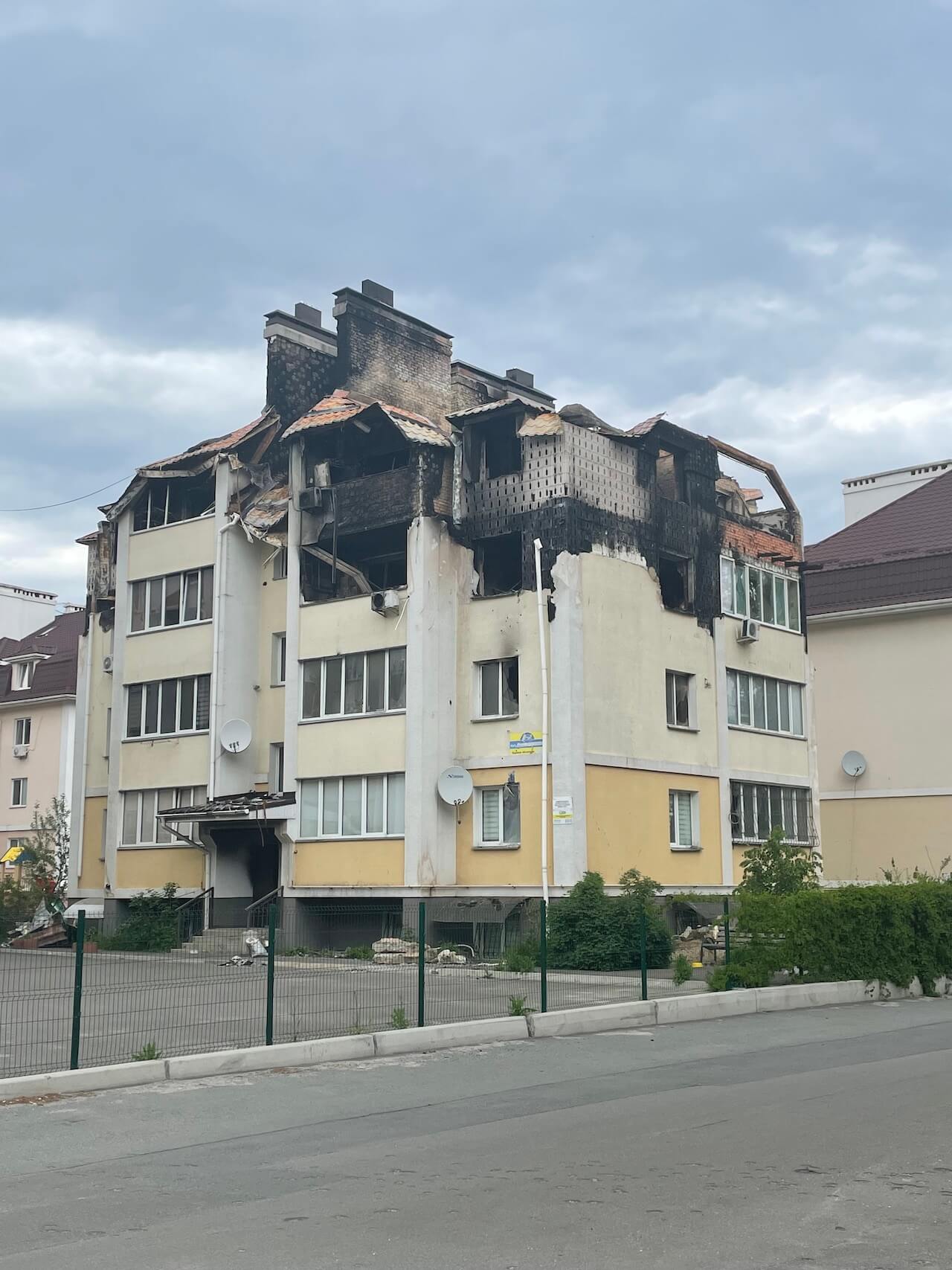
Hostomel community was home to approximately 44,000 total inhabitants before the 2022 invasion. The settlement was under temporary occupation for 35 days, occupied at the beginning of the invasion on February 24 and liberated on March 31, 2022. More than 400 local inhabitants are still considered missing, and the precise number of casualties has not yet been identified. Approximately 15,000 people live in Hostomel community as of June 2022. 4,500 buildings were damaged by Russian forces, including approximately 30% of the settlement housing; as of mid-June, 2,800 households have applied for recovery aid (due to various types of damages, including fully destroyed buildings); more applications are anticipated as people continue to come back to their homes.
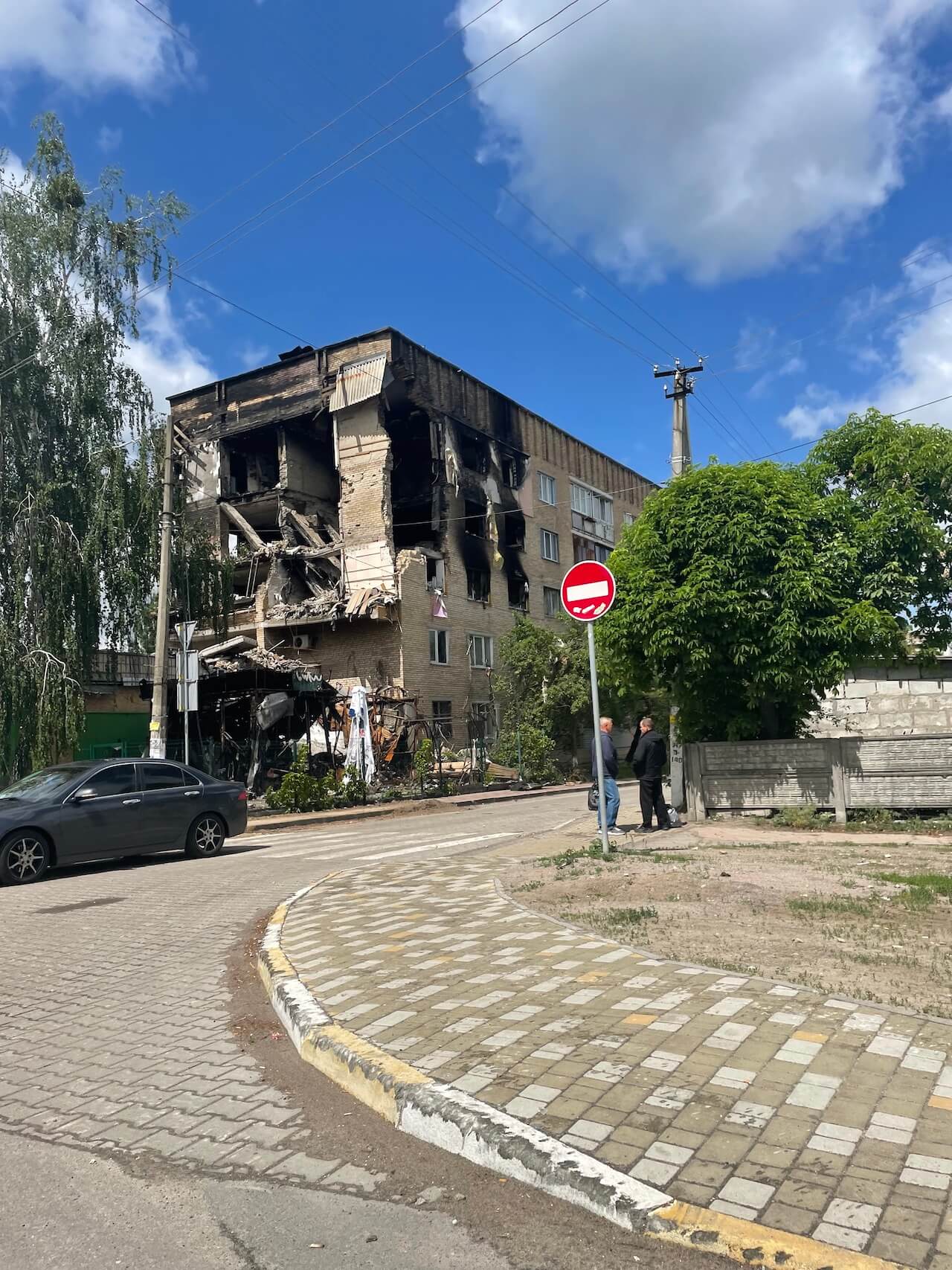
Chart #4 reflects relevant population numbers for all studied settlements: prior to temporary occupation, for the period of occupation and as of June 2022. Data for the population who remained in Hostomel during the occupation is not available at completion of this report.
Chart #4: Population before and After Occupation

RESEARCH METHODOLOGY
RNA field research was conducted from 26 May to 8 June 2022, consisting of structured field interviews and analysis of open sources (media reports and official information published at various channels). Field phase consisted of 17 interviews guided by a unified template, 60% of these meetings were held in person in the settlements. Five of 17 key informants inputs relevant to all settlements under the study, while 12 provided information about a single settlement. Irpin information was provided by ten interviewees, while Bucha and Hostomel each received information from nine interviewees. Interviewee list included representatives of state institutions of Ukraine, local authorities (elected and appointed), civil society, religious, and business communities. All key informants are engaged in providing, allocation, or distribution of humanitarian and recovery support to the region and local communities.
The key informant interview guide included a list of 18 recovery categories[1], plus an “other” option. Each respondent was prompted to identify multiple priorities to reflect the state of affairs in their areas of concern. Each choice indicated prioritisation of a specific need by that respondent. Cumulative respondent choices were assessed for each of the three towns. This resulted in classification of needs as “high priority” if identified at least 5 times, “top priority” if identified 8 or more times, “medium priority” if identified 3 or 4 times, and “lesser priority” if identified 1 or 2 times. A few received zero points, and are considered as not relevant or resolved. Chart #5 reflects priority recovery needs indicated in all three towns.
PRIORITY RECOVERY NEEDS IDENTIFIED
The Recovery Rapid Needs Assessment was conducted in each of the three towns of Bucha, Irpin and Hostomel. The priority needs identified are presented in Chart #5.
Chart #5: Priority needs identified

BUCHA: Top priority needs identified are housing, income situation in the area, UXO / landmines, health services. Further elaboration on this is provided below. Categories, not to marked as priority needs by any respondent: electricity, mobile phone services, security - personal safety, access to information, legal aid (free primary aid). Click here to see the Bucha report.
IRPIN: Top priority needs identified are housing, UXO / landmines, health services, food availability. Further elaboration on this is provided below. Categories, not marked as priority needs by any respondent: access to information, and legal aid (free primary aid). Click here to see the Irpin report.
HOSTOMEL: Top priority needs identified are housing, UXO / landmines, income situation in the area, health services, food availability. Further elaboration on this is provided below. Categories, not marked as priority needs by any respondent: security - personal safety, legal aid (free primary aid). Click here to see the Hostomel report.
RECOVERY AID
Multiple streams of post-occupation relief exist. At the national level, state entities collect requests and coordinate their response. Some needs are related to already existing national institutions, and therefore are addressed based on national programmes. Some are provided to the attention of countries supporting Ukraine, international organisations and institutions for further review and possible support. At the regional level, Kyiv Region Military Administration (and their local branches) are collecting aid under the Volunteers Centre. At the local level, elected authorities actively build collaboration with international actors, sister cities and business, advocating for capital relief to communities they represent. Finally, Humanitarian Hubs of the local town councils (sometimes part of regional networks) provide major support to local inhabitants (i.e. food, clothes, household items).
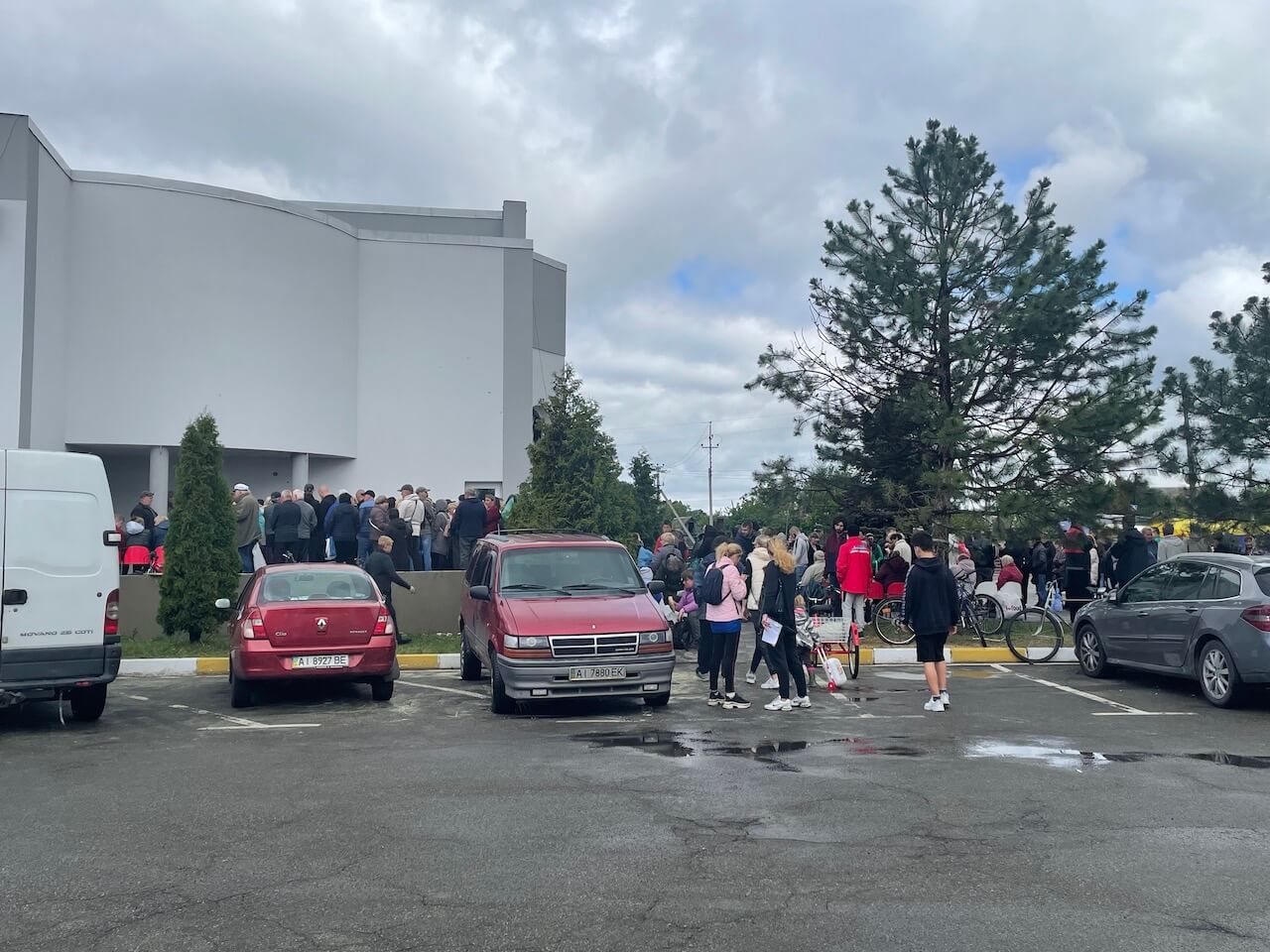
Civil society, religious, and business communities actively fundrise and cooperate with charitable institutions locally and worldwide, playing a key role in revival of the three settlements. Some 60 countries have provided financial and material humanitarian support, with particular attention to food and medical supplies. Global actors, such as UN family institutions and agencies (UNICEF, UNDP, UNFPA, OCHA, WFP, WHO, IOM), ICRC, ACTED, Save the Children, CARITAS, GIZ, Ukrainian diaspora, and other 50 organisations engaged in the framework of joint response in Kyiv region, cooperate in humanitarian clusters and support local communities, predominantly coordinating the list of needs to-be-covered with national and local authorities, and delivering diverse humanitarian relief and support to regional capital projects (water supply, sewerage and drainage, heating). A significant percentage of local delivery of assistance was carried out by over 200 Ukrainian NGOs and volunteer organisations.
KEY RECOVERY PRIORITIES AND RECOMMENDATIONS
This elaborates in more detail on top priority needs identified and relevant for all settlements under investigation. It also provides a view on the lists of stakeholders active in the field according to insights shared by key informants.
HOUSING
Housing is the top priority for all three settlements and corresponding communities. Currently, fewer than 30% of local inhabitants have returned to their homes in the area, but the need for temporary housing, repair and rebuilding work is already urgent. Local and international actors actively support this category of need, local authorities present revival plans for major infrastructure at national and global fora, establishing collaborations and conducting fundraising activities for the communities they represent.
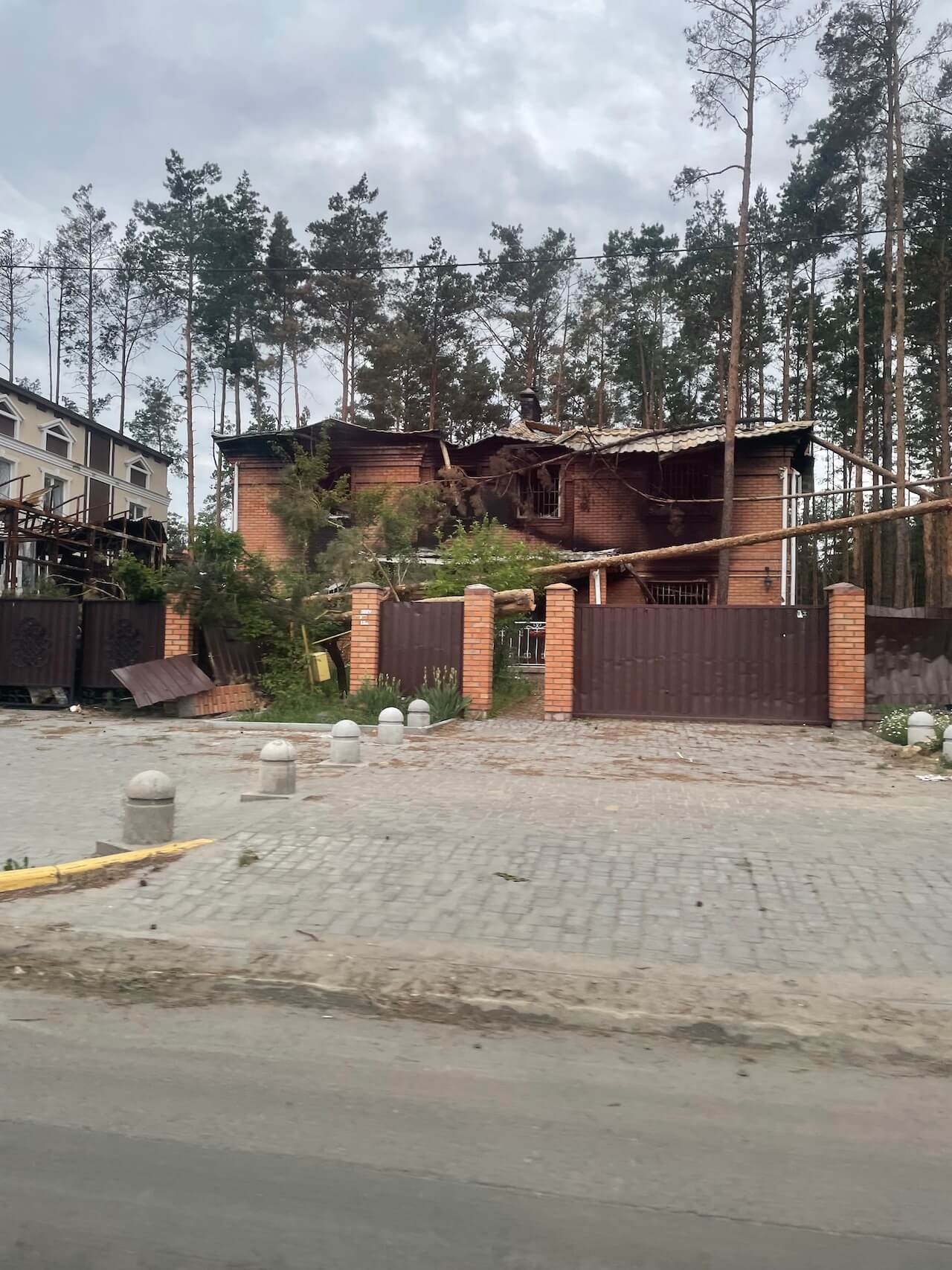
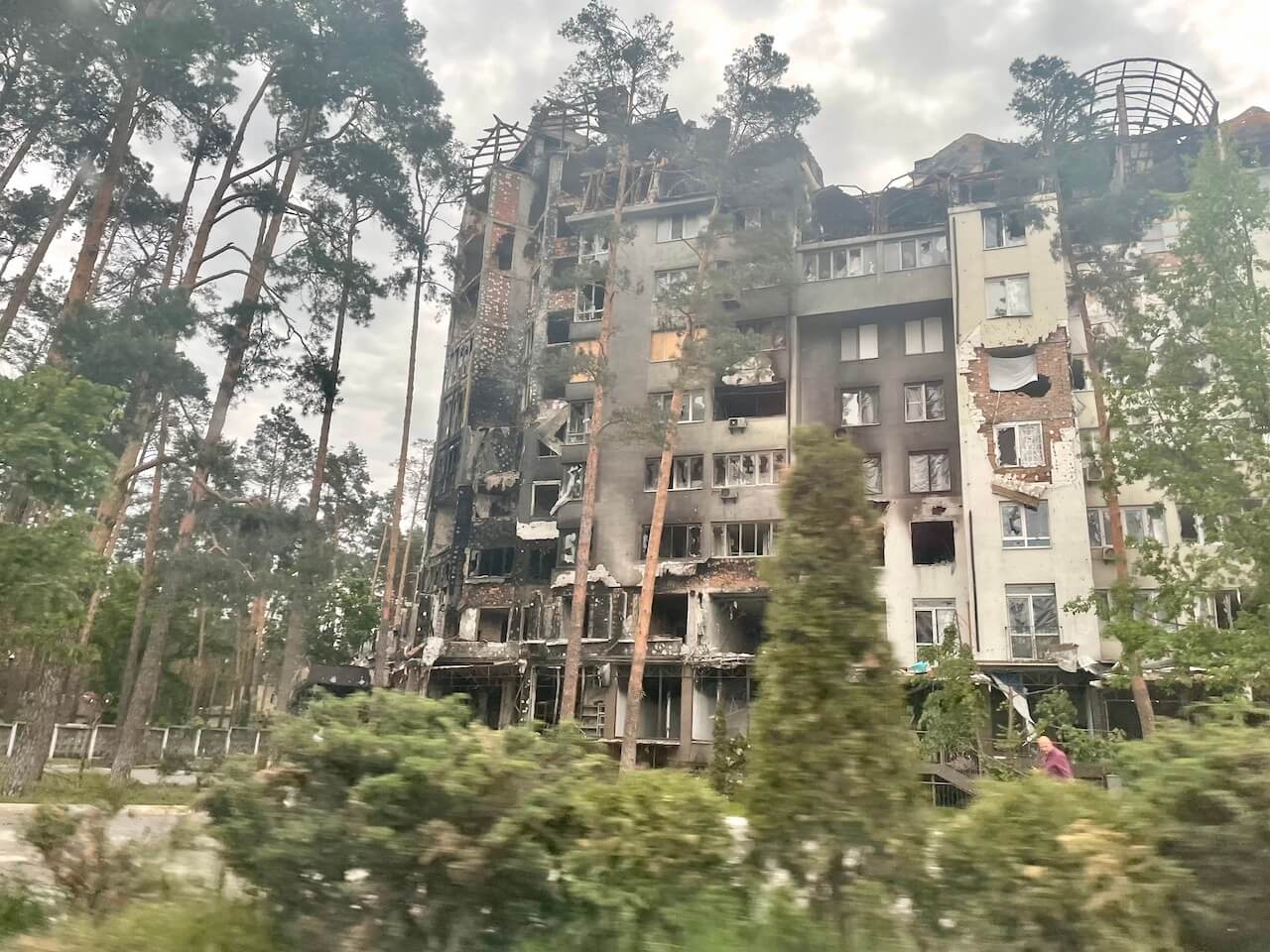
According to respondents, further support should be aimed at:
- establishment of temporary housing for inhabitants in urgent need, and / or re-engineering of buildings for other purpose (consider option of individual modular houses when people already possess private land with utilities infrastructure),
- minor restoration in terms of supply of tools, materials and funds for roofs / windows / doors / furniture purchase or repairment,
- engagement of qualified experts, designers and engineers for evaluation of damages, drafting of technical documentation and reconstruction plans,
- development of standard procedure for (1) data collection about damaged and destroyed housing, and (2) planning of the restoration and rebuilding effort,
- restoration planning and technical documentation drafting, and
- capital restoration of existing buildings (private housing, public infrastructure buildings, objects of critical infrastructure, regional units of state emergency services).
For this category of needs, the following actors reportedly provide aid: Central (national) Government and Local Authorities, State Emergency Service, Private Business from Ukraine and abroad, United Nations, Red Cross, Promoters and Patrons (personalities), Volunteers, Metropolitan Epiphanius of Kyiv and All Ukraine, Churches from the United States of America, Warsaw Fund, Rotary International, Ukrainians in Portugal, Greece, funds from Germany, other Non-specified International Organisations.
INCOME SITUATION
Based on respondents' input, all categories of business were damaged heavily by the Russian invasion of Ukraine. Industrial production, private sector services and commerce all suffered greatly. Entrepreneurs report major losses: equipment destroyed or stolen by occupiers, technologies and automation not available, buildings not yet restored. Tech companies, warehouses, centres of logistics, shopping malls and big supermarkets are all severely affected by shelling and missile strikes. In Irpin, almost all business, and biggest tax payers’ property and facilities were destroyed. Small and medium enterprises are slowly coming back to the town. Many enterprises are not convinced that it would be realistic to relaunch their business in the area without an end to the war and support from investors and creditors. Most people who come back to Hostomel have nowhere to work / earn regular income. The predominant situation with jobs and income for the local populations in communities is extremely severe. Reportedly, only 20% of the local population who have returned to the area can ensure all their basic needs themselves; humanitarian assistance helps bridge this situation, but is not a sustainable solution in the long run.
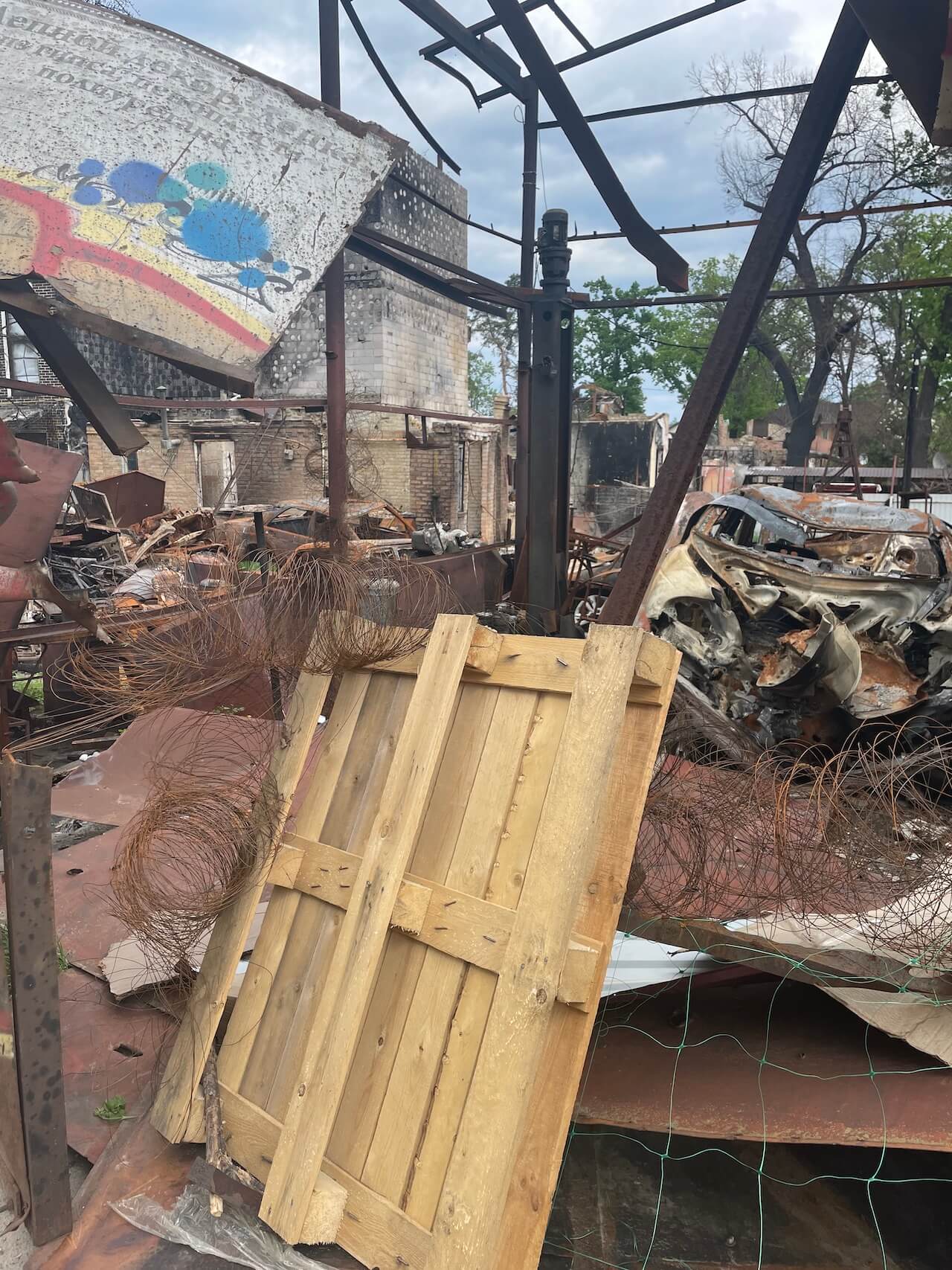
According to respondents, further support should be aimed at:
- aid for local business recovery in terms of equipment, materials, and repair of manufacturing areas, micro-grants for business activation,
- affordable credits for business to restart production and ensure jobs,
- aid to attract local and regional force for repair, i.e. engineers, constructors, and
- creation of new jobs for those people who return to the area (especially for those who lost their jobs at international companies based in the towns, as these employers left Ukrainian markets).
For this category of needs, the following actors reportedly provide aid: In Bucha rayon, there is a Restoration Commission, which, amid other tasks, collects information about the needs of the local business community. As well, DIIA Business Bucha, and the Departments of Economic Affairs of Local Councils and Hostomel Military Administration serve as contact points for businesses to share their inquiries. Certain aid for the category was also provided by the state, but overall very limited aid was reported as currently available for this category of needs. At the same time, thematic foundations and support programs continue to emerge both in Ukraine and worldwide.
UXO / LANDMINES (HUMANITARIAN DEMINING)
As reported by the State Emergency Service (Kyiv region headquarters), as of 7 June, 98% of public areas in temporarily occupied and now liberated inhabited settlements (i.e. municipal and critical infrastructure, common areas, highways and main roads) had been cleared of explosive remnants; to a lesser extent apartment buildings and private homes had been cleared upon owners’ requests. Safety of the local population was supported by the call of local mayors for the local population to not come back before general demining actions were completed. Damaged housing is inspected for explosive risks upon owners’ request, as people return. Additionally, there is a need for further humanitarian demining actions for such areas as forests and forest belts, parks and agricultural areas. Full clearance of all suspected areas is likely to require several years, once the war has ended.
According to respondents, further support should be aimed at:
- purchase of sapper equipment and personal protection items (ballistic helmets and vests) for servicemen and servicewomen of Emergency Services and Armed Forces),
- purchase of explosive-protected vehicles for demining missions and operations, and
- educational materials, information sessions and lessons for local inhabitants concerning the rules of safe behaviour in areas with suspected explosive objects.
For this category of needs, the following actors reportedly provide aid: State Emergency Service (as main responsible agency at the national level), governments of Poland, Austria, and United Kingdom, Ukrainian business, and Non-specified International Organisations, Local Authorities.
HEALTH SERVICES
This category of needs is highly relevant for all investigated settlements. At the same time, in the entire area, basic medicines and limited (by existing capabilities) primary healthcare services are provided without cost to patients by the Ministry of Healthcare of Ukraine, and other organisations.
According to respondents, further support should be aimed at:
- supporting emotional resilience and psychological health (of both inhabitants and security sector workers),
- opening pharmacies, medical testing centres, and mobile clinics,
- providing support to health sector employees, in order to make sure that they come back to work in the area,
- capability revival (means of transportation, equipment, esp X-rays), and
- restoration of buildings and other objects of infrastructure of healthcare establishments.
For this category of needs, the following actors reportedly provide aid: Central (Ministry of Healthcare) and Local Authorities, Husak Clinics, Dobrobut Clinics, UNICEF, ICRC, Saint Ihidii Community (Italy), Friendly Parishes from the United States of America, Producers of Medical Goods, Local Foundations and Organisations.
FOOD AVAILABILITY
The relative priority of the food security issue differs depending on the town. Largely resolved in Bucha community, it still remains one of top challenges for the Hostomel community, as it is in some smaller communities of the rayon where food shops have not yet reopened and long queues gather in anticipation of aid delivery. Many people lack sufficient funds to support themselves (mainly due to lost jobs). Food assistance is still necessary for specific socially vulnerable groups, as well as locals living in temporary housing, and those servicepeople who continue their missions on the ground; these are served by food packages and daily public kitchens, which are supported by many organisations and networks. Local community informants envision that in the autumn food supply for local inhabitants will become even more challenging, as the present humanitarian response may be becoming “tired”. Supermarkets have partially reopened, although respondents reported a need for help with rubble removal and restoration of buildings where shops are situated.
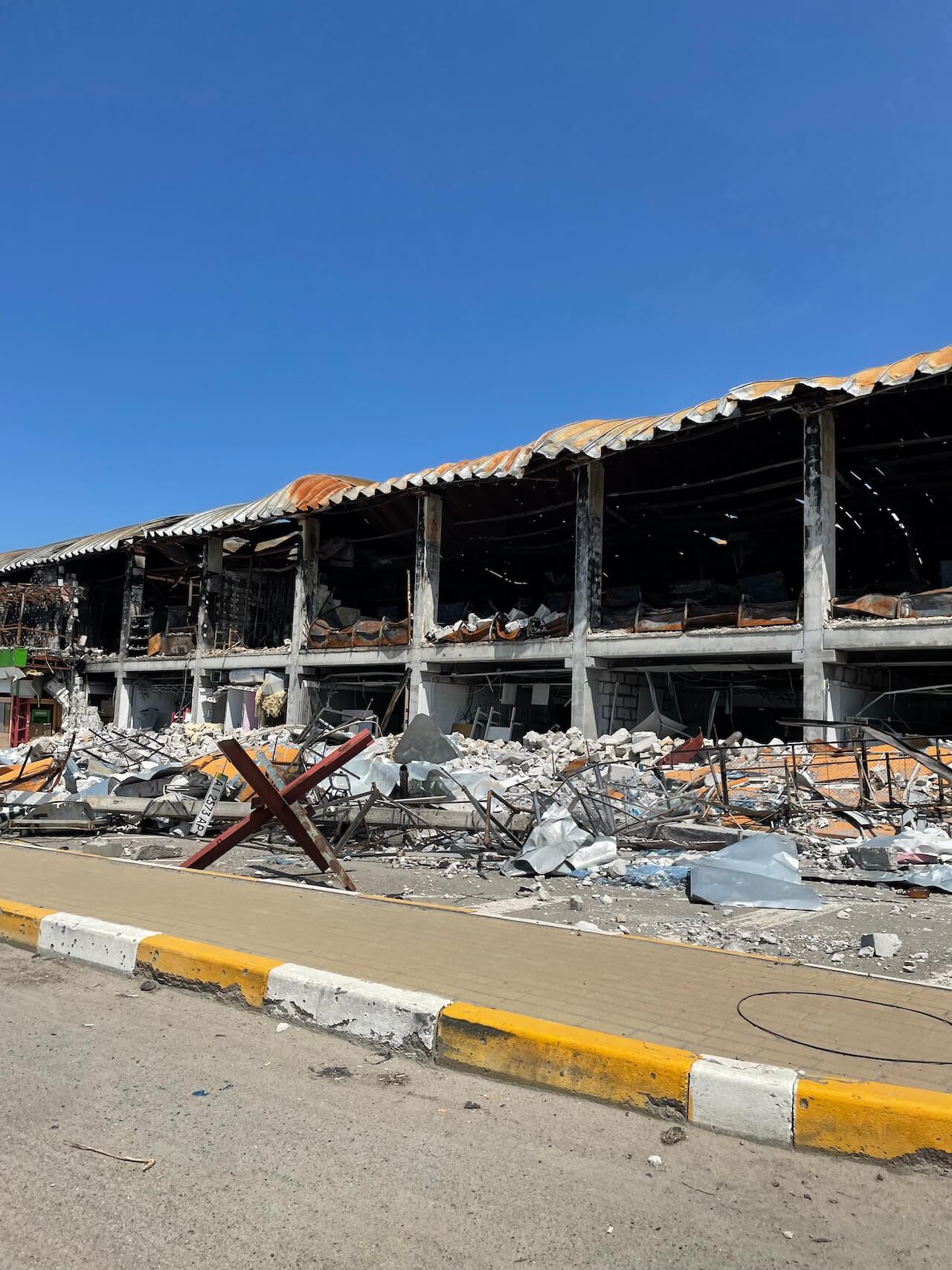
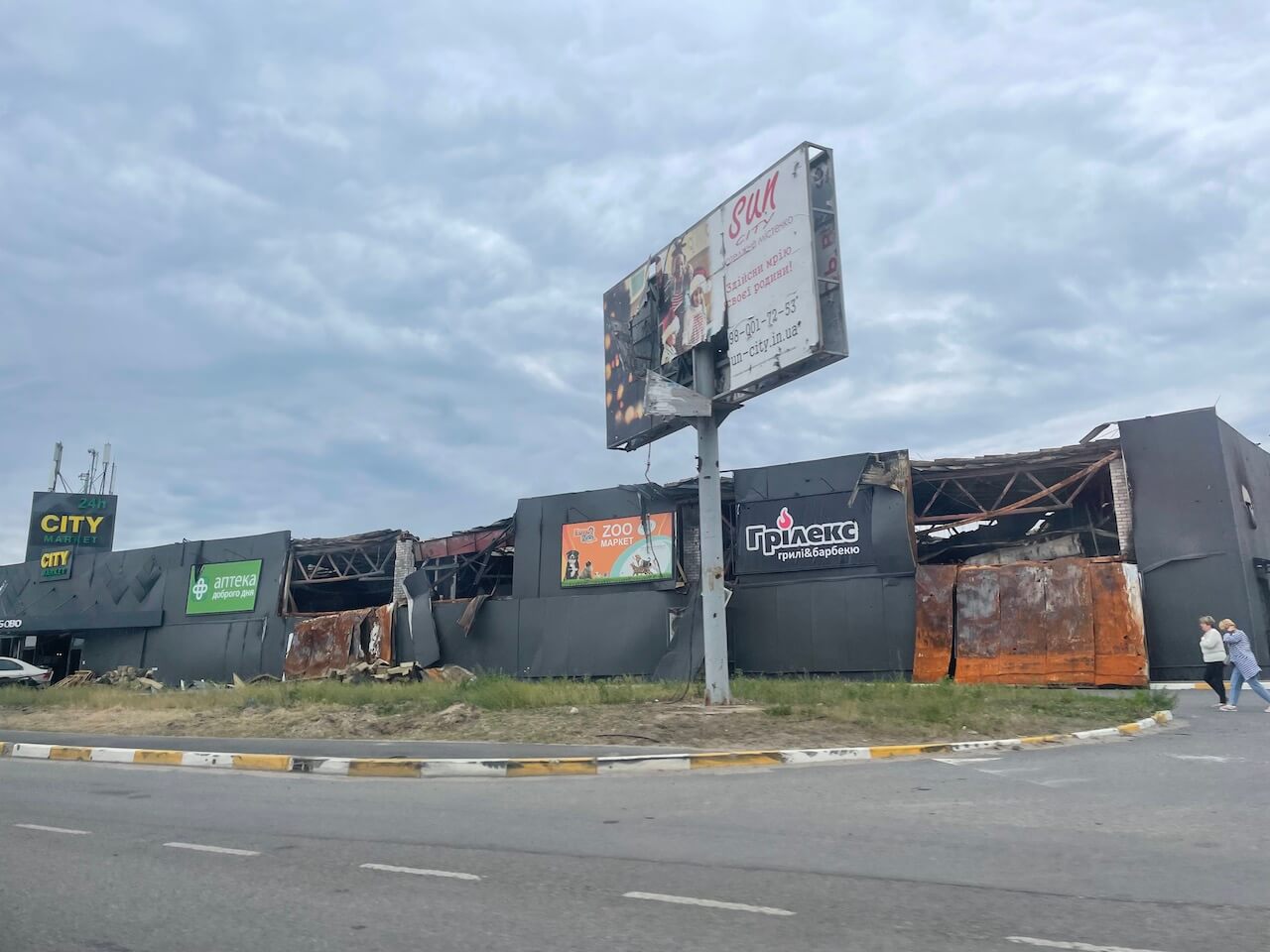
According to respondents, further support should be aimed at:
- food packages (especially, non-perishable products),
- restoration of buildings where supermarkets are / were situated,
- enhanced support for vulnerable categories of people.
For this category of needs, the following actors reportedly provide aid: Government of Ukraine, Kyiv Region Volunteers Headquarters, Local Councils and Administration, Local Humanitarian Headquarters, Volunteers and Charitable Foundations, Metropolitan Epiphanius of Kyiv and All Ukraine, World Food Relief, Samaritan's Purse, Private business and donors from Ukraine, Israel, Georgia, Spain, Poland, Germany, Latvia and other EU countries, UNICEF, and Red Cross.
CONCLUSIONS
As available sources confirm, Ukraine obtains a substantive amount of financial and humanitarian aid arriving from diverse sectoral and geographical origins. As war continues, the quantity and diversity of current needs to be addressed remains significant. At the same time, demand for efficient coordination of needs is present and confirmed by respondents of this RNA, including necessity to optimise data collection, verification of expressed lists of needs, reporting and transparency. Top criteria for aid of any type are: speed of delivery and availability in terms of transportation realities. This should be supported by appropriate institutional arrangements and flexibility in terms of final beneficiary area, as rapidly changing security considerations highly impact local needs and response. For the rebuilding and recovery aspect, it is important to engage local workers and organisations to provide jobs and address the issues of workforce deployment. Since work will extend over various seasons, it is important to consider the climate and colder temperatures in planning for temporary housing solutions and repairs of all types.
Rather than importing supplies to respond to local needs, in most cases it is possible (and desirable) to solve problems with locally available supplies. Majority of products, goods and services required for effective and efficient post-occupation recovery are available on Ukrainian markets in other regions and cities. Purchasing locally in Ukraine would also support the business environment and national economy.
Local networks, i.e. churches, volunteers, NGOs, and authorities continued to function even with limits during the occupation, and have proven to be best situated and equipped to collect, operate and spread the word about the urgent needs of their communities. However, availability of knowledge and information about global opportunities, assistance programs and initiatives are often lost on the way to final recipients and beneficiaries, who are not always aware of the sources of the support they receive.
While the war is still on, any type of post-occupation restoration is rather complicated to orchestrate and conduct. Nonetheless, local inhabitants express a strong desire to return to normal life as soon as possible, a readiness to restore their homes and businesses, and to return to any available jobs. Continuing assistance for the needs identified in this report will provide an important contribution to immediate needs and medium term recovery. Respondents expressed their willingness to be contacted regarding potential support; contact information may be requested from RMTeam International ([email protected]).
[1] 18 recovery categories are: housing, water, electricity, wifi / internet services, mobile phone services, food availability, garbage collection, supermarkets available and open, rubble removal, education services, health services, income situation in the area, feeling of security amid continued war, security - personal safety, UXO / landmines, information accessible, state (admin) services availability, legal (primary and secondary) aid availability